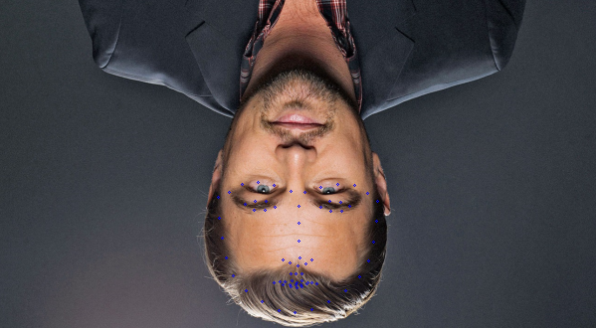Basically i'm trying to check if a face is upside down in an image using this library https://github.com/takuya-takeuchi/FaceRecognitionDotNet. Take example of the image below
This is an image that is successfully detected using the FaceRecognition.Net library.The image is upside down.I have marked all face landmarks in the image with a blue ellipses.
This is the approach i follow
// Finding faceparts
var faceparts = dparameters._FaceRecognition.FaceLandmark(dparameters.FCImage);
// Drawing Ellipses over all points got from faceparts
foreach(var facepart in faceparts) {
foreach(var mypoint in facepart.Values) {
foreach(var x in mypoint) {
tempg.DrawEllipse(Pens.Blue, x.Point.X, x.Point.Y, 2, 2);
}
}
}
Now i'm checking if the image is rotated by comparing maximum Y coordinates of the lip and eyepoints
var temp = faceparts.FirstOrDefault();
IEnumerable < FacePoint > lippoints;
temp.TryGetValue(FacePart.BottomLip, out lippoints);
IEnumerable < FacePoint > eyepoints;
temp.TryGetValue(FacePart.LeftEye, out eyepoints);
var lippoint = lippoints.Max(r => r.Point.Y);
var topeyepoint = eyepoints.Max(r => r.Point.Y);
if (lippoint > topeyepoint) {
bool isinverted = true;
} else {
bool isinverted = false;
}
The issue is that even when the image is not upside down, the eyecoordinate is less than the face coordinate.This is because a false face is detected as outlined in the image.How to get over this issue?


CNNModel.But using this model crashes the library.Did you try it out ? – Bitty